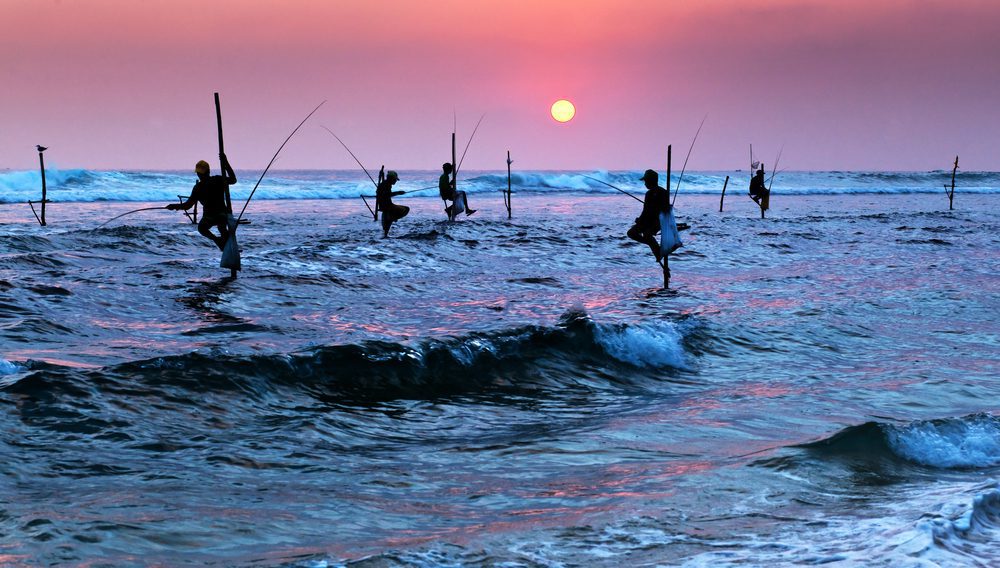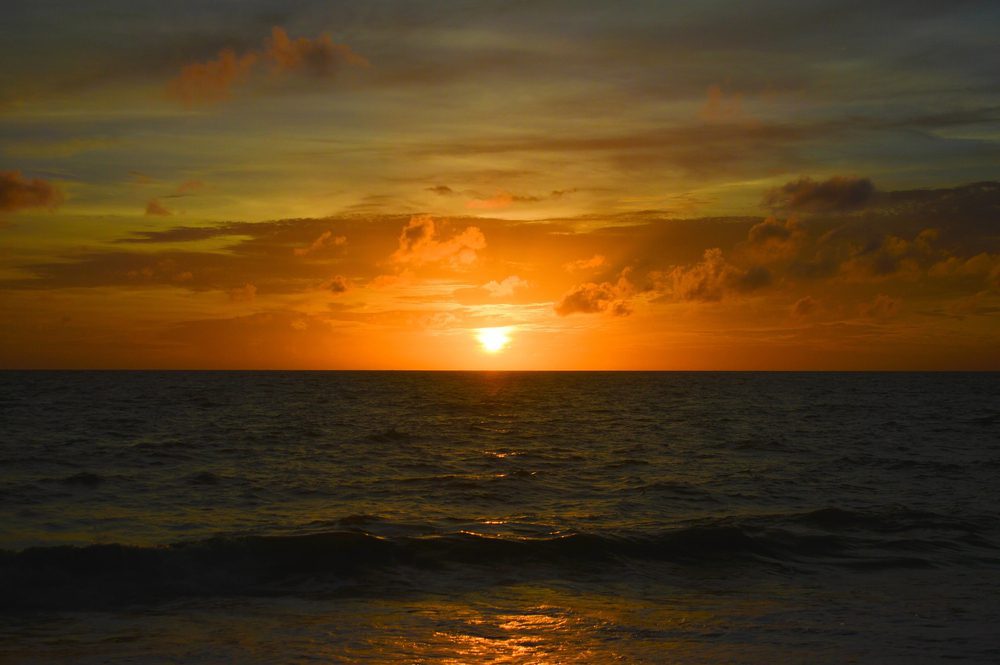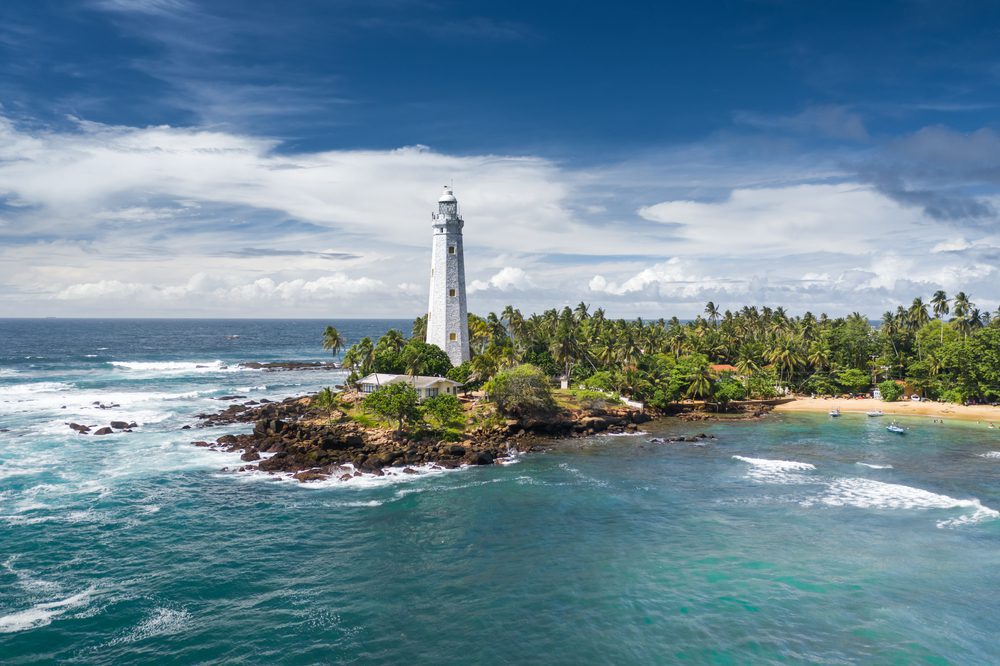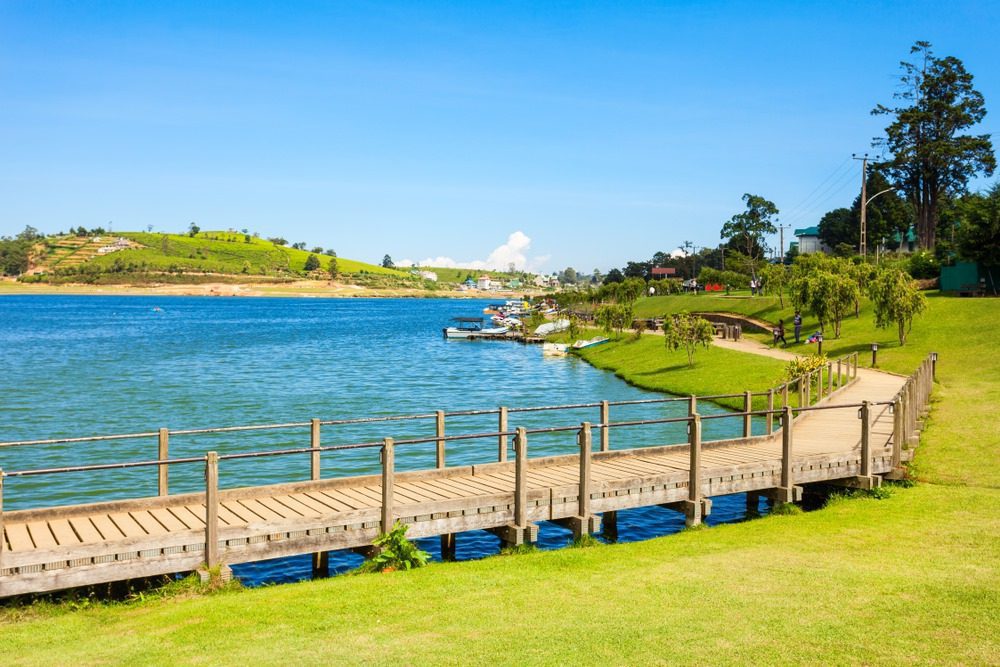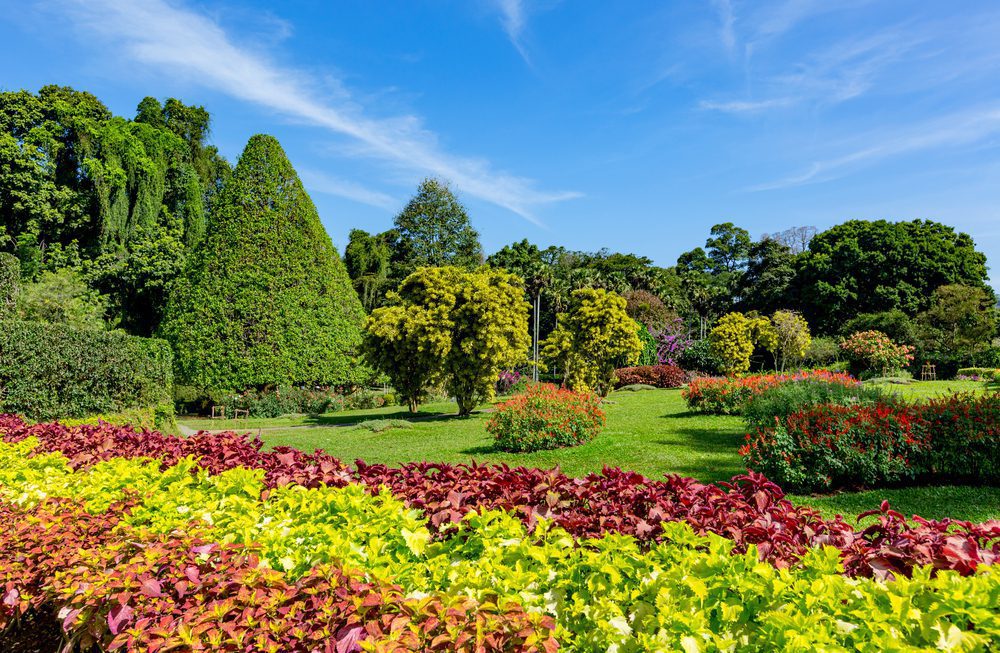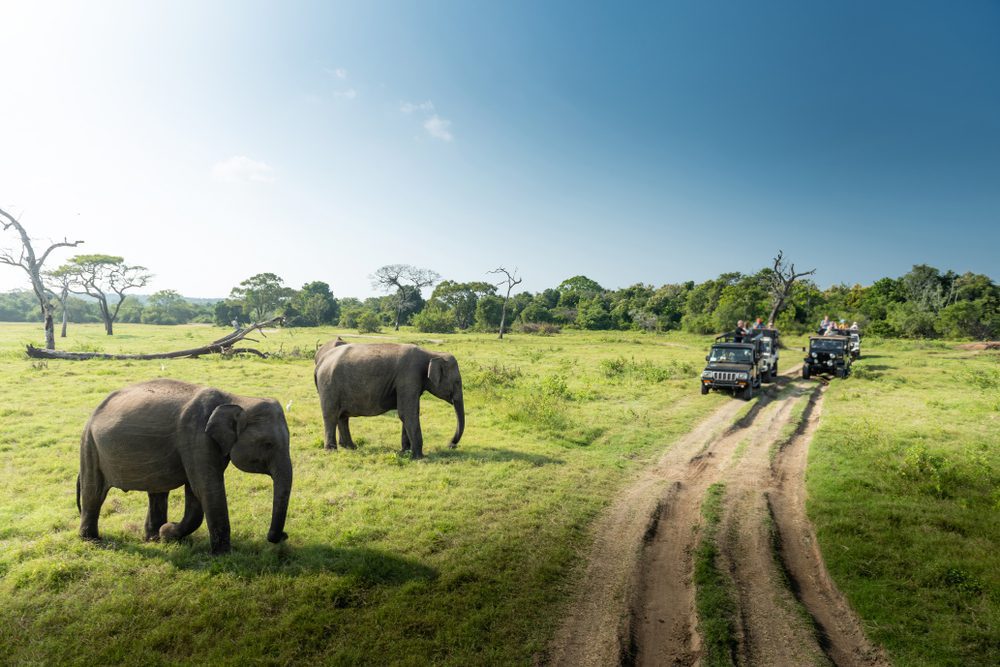The coast of Sri Lanka, the world’s 25th-largest island, is fringed by palm trees for as far as the eye can see.
Sri Lanka is a tropical island located off the southern coast of India, between the Bay of Bengal and the Laccadive Sea. It has a shoreline fringed with palm trees as far as the eye can see and ranks as the world’s 25th biggest island. Sri Lanka has a lot to offer thalassophiles and sun worshipers, what with its proximity to the Equator and year-round temperatures of roughly 27°C (80°F) (when it’s not raining, of course).

Sri Lanka has two main monsoon seasons, and as they rotate, the island can be visited at any time of year. Because of the high risk of shark attacks, surfing at Arugum Bay on the eastern coast is not recommended. However, the waters around Kalpitiya on the western coast, with their abundance of blue whales, are scarcely a poor substitute. Overall, it’s possible to avoid rainy beach days by scheduling your vacation during certain months, but keep in mind that there is always someplace dry to visit.
The months of December through March are ideal for exploring the west and south beaches and hill country, while April and May through September are prime seasons on the east coast.
ALSO READ: Top hotels to check out in Sri Lanka
October to March – best to visit the west and southern coastline
includes western Chilaw, southern Galle, and western Colombo, the country’s capital.
Temperatures hover between 27 and 29 degrees Celsius all year; however, from April to September, the area is hit by the Yala monsoon season. The wettest months throughout this time frame are April, May, and June. The majority of beachfront accommodations can be found here.
The best weather for a trip to the beach is usually between October and March; however, a sudden downpour is always possible.
Plan your trip between January and March if you want to go swimming in the ocean. You also have the best chance of seeing blue and sperm whales at this time.
Travelers hoping to celebrate the “New Year” with the Sinhalese and Tamil locals should travel in the month of April. The Sinhalese harvest season in Sri Lanka has officially come to an end. The festival lasts for about a week and features many different social and culinary activities centered on plantains.
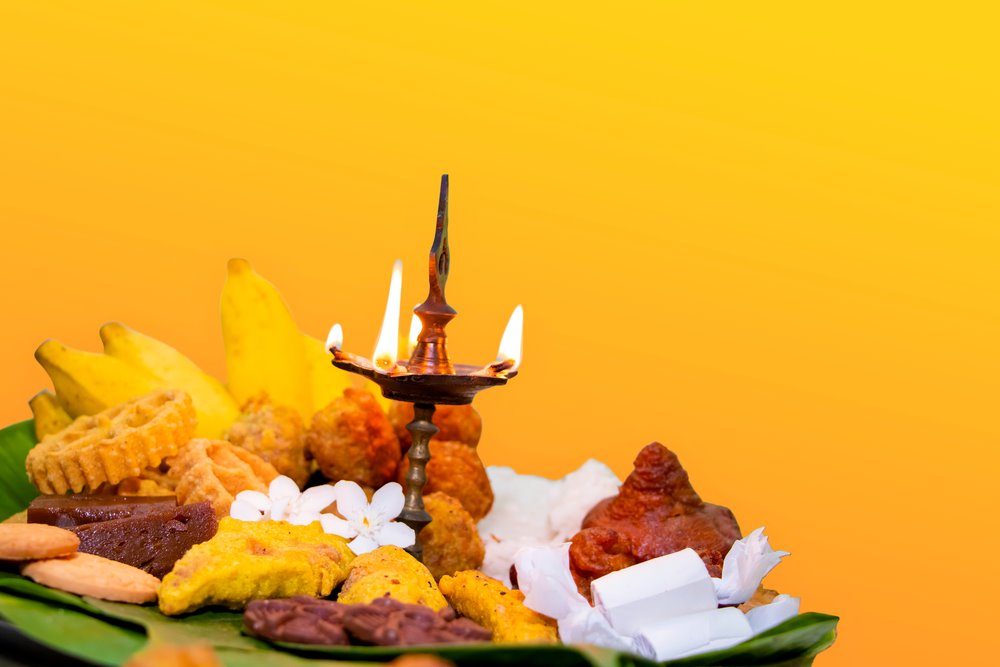
First held in Kataragma in July, these ancient Esala festivals have been celebrated there for centuries. The festivities take place in honor of the Buddha’s first sermons. You could see whip crackers, elephants, Hewisi drummers, and Borukakul Karayo stilt walkers during the festival in Kataragama.
As an alternative, the Kandy area celebrates the second of the Esala festivals in August. Specifically, this event lasts for 10 days and, like Kataragama, has dancers, jugglers, musicians, firebreathers, and extravagantly adorned elephants. Okra and banana blossom are just two of the regional specialties you must sample while you’re there.
Also, throughout the months of May, June, and July, schools in Sri Lanka are in the midst of their second terms. These are the perfect times to take a trip if you want peace and quiet or if you don’t want to bring the kids.
March – best time to visit the Central Hills
In the Botanical Gardens of Kandy, Peradeniya, and Nuwara Eliya you’ll find the Central Hills in the south-central region of Sri Lanka, and they’re a hilly region. The mountainous triangular region, which comprises around 20% of the island’s total size, reaches heights of more than 300 meters.
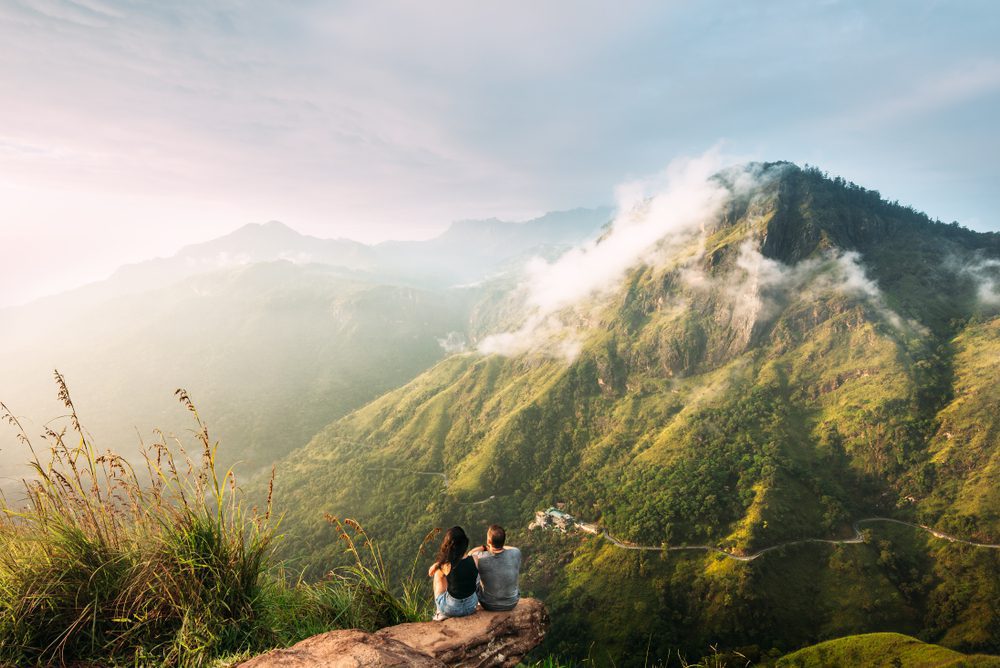
The Central Hills are around 15 degrees colder than the coast on average due to their higher altitude and location. The sunniest and driest months often fall between January and March. October and November are often the wettest months.
Do I need a visa for Sri Lanka?
Sri Lanka’s visas are divided into three categories: visas for business trips, visas for tourism, and visas for transit. You can apply for your Electronic Travel Authorization (ETA) online.
April to September – the best time to visit Eastern and Northern areas
Includes Habarana and Vavuniya in the north and Trincomalee in the north east, as well as the eastern cities of Eravur and Passikudah.
From November through March, the Eastern and Northern regions experience the “Maha” monsoon season, with the wettest months being November and December. As a result, visitors should go between the months of April and September if they want to escape the heat.
Despite the high temperatures and sometimes intense downpours, August and September are the best months for taking a vacation with the family.
October and November – inter-monsoonal period
Extreme floods and thunderstorms are always a risk during the inter-monsoon season. As long as you can deal with the possibility of unexpected rain, visiting during the shoulder season has its advantages, such as fewer tourists.

Another annual festival that occurs in either October or November is Deepavali (Diwali), commonly known as the “festival of lights” in its Sanskrit form. Visit one of Sri Lanka’s most revered Hindu temples, Kandaswamy Kovil, and see the amazing glowing houses that residents have built for this festival.
MAKE SURE YOU ALSO READ: 10 BEST PLACES TO VISIT IN SRI LANKA
READ ALSO: SRI LANKA TRAVEL GUIDE


